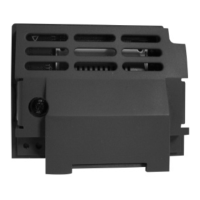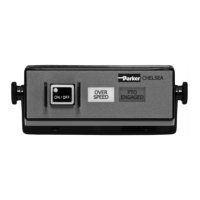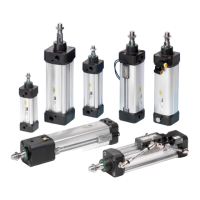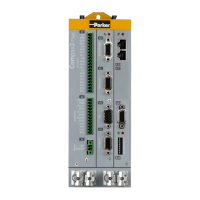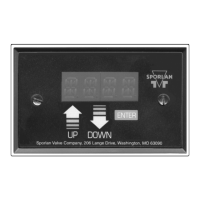Parker Hannifin
When using an IF/THEN statement, observe the following:
• You can nest GOTO and GOSUB statements in an IF/THEN
statement.
Example
The following demonstrates several simple IF/THEN statements.
IF (BIT 24) THEN P0 = P0+1
IF (P0 > 4000) THEN GOSUB 100 : P0 = P0-1
IF/ELSE
The IF/ELSE statement provides a powerful tool for program
branching and program flow control. The IF/ELSE statement allows
you to run one set of code if the condition is true, and another set of
code if the condition is false. The IF/ELSE statement must end with
ENDIF.
When using an IF/ELSE statement, observe the following:
• You can nest GOSUB statements in an IF/ELSE statement. The
GOSUB provides a return into the IF/ELSE statement.
• Do not nest GOTO statements in IF/ELSE statements. The GOTO
statement exits the IF/ELSE statements, and does not provide
any link back inside.
• Do not nest IF/THEN statements in IF/ELSE statements—the logic
may not provide the results you expect.
Tip: When troubleshooting programs, use the LIST command to
view the program stored on the controller. In recognizing
IF/ELSE statements, the controller indents the statements
under the IF including the ENDIF. If any statements in the
IF/ELSE are not indented but should be, check the code in
the program editor and re-download.
Example
The following demonstrates different actions based on conditions
being true or false. If the input (bit 24) is true, the long array
increments and axis X moves an incremental 25 units. If false, the
long array decrements and axis Y moves to absolute position 5.
IF (BIT 24)
LA0(1) = LA0(1)+1
X/25
ELSE
LA0(1) = LA0(1)-1
Y5
ENDIF
20 Programmer’s Guide

